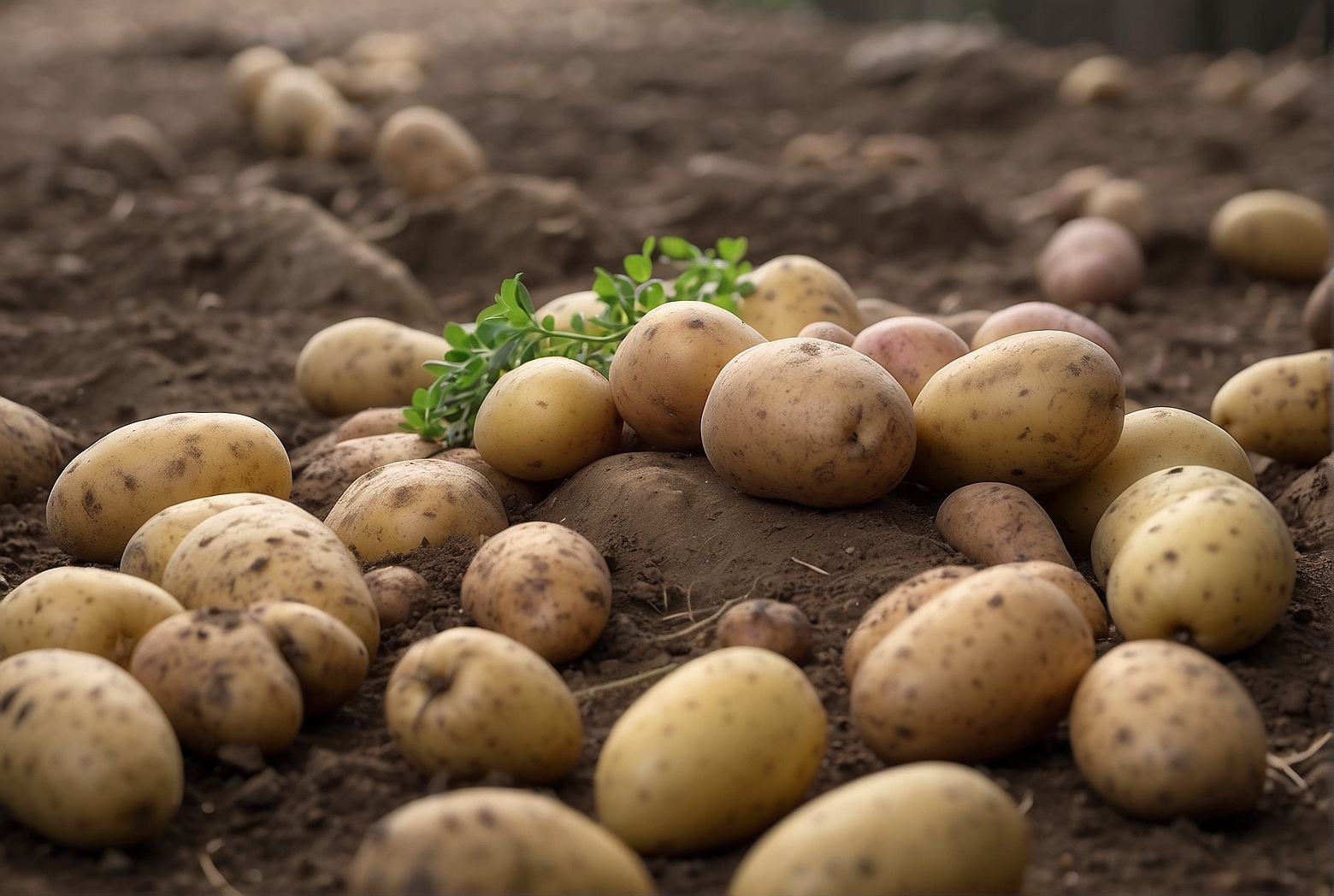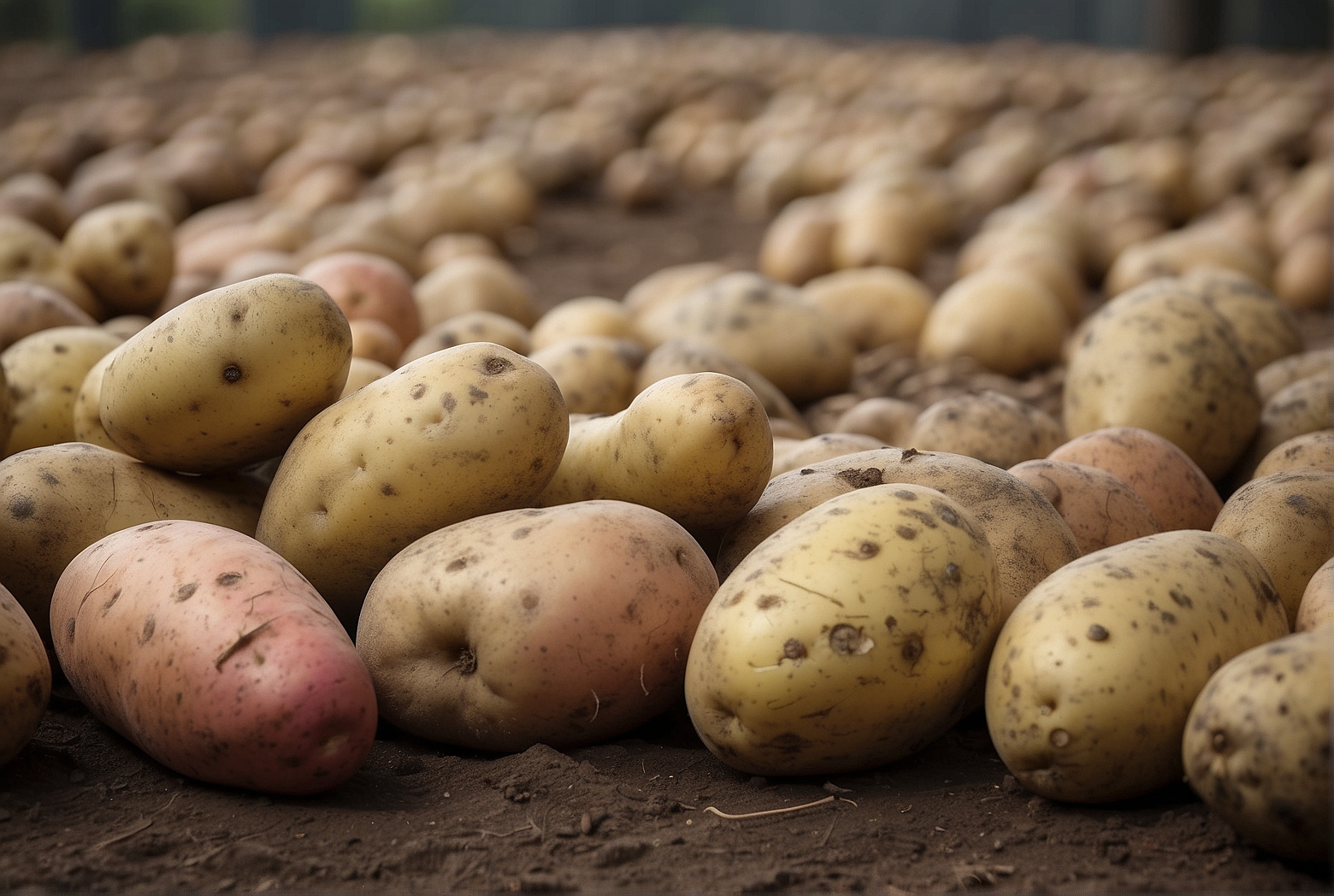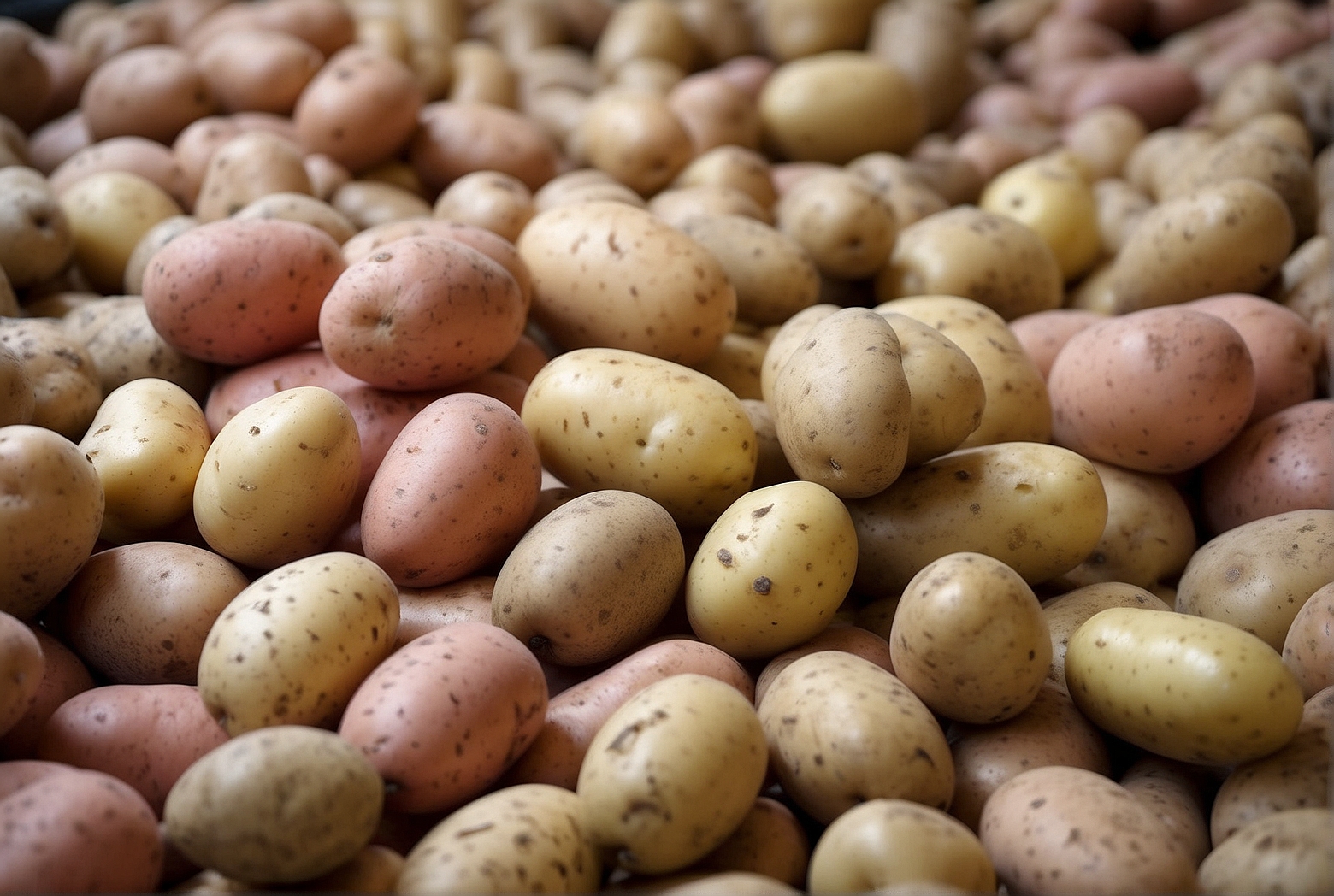Last Updated on April 4, 2024 by Tony Manhart
You’ll be amazed at the fascinating growth habit of Swift Potatoes! Have you ever wondered whether they are determinate or indeterminate? Well, the answer to that question lies in understanding their unique characteristics. Determinate potatoes have a compact growth habit, meaning they stop growing once they reach a certain height, making them perfect for container gardening. On the other hand, indeterminate potatoes continue to grow and produce tubers as long as the conditions are favorable. So, let’s explore the growth habit of Swift Potatoes and uncover the secrets behind their remarkable development.
Overview of Swift Potatoes
Definition of Swift Potatoes
Swift Potatoes are a type of potato variety that can be classified into two main growth habits: determinate and indeterminate. This classification refers to how the plants grow and develop, particularly in terms of their size, tuber formation, and flowering habit. Understanding the growth habits of Swift Potatoes is crucial for successful cultivation and optimizing yields.
Origin of Swift Potatoes
The origins of Swift Potatoes can be traced to their parent species, Solanum tuberosum, which is native to the Andes region in South America. These potatoes have been cultivated for centuries and have spread globally, becoming a staple food in many countries. The specific variety known as Swift Potatoes may have been developed through selective breeding and genetic modifications to enhance certain traits, including their growth habit.
Common Varieties of Swift Potatoes
Within the category of Swift Potatoes, there are various specific varieties available for cultivation. Some popular examples include Swift Early, Swift Gold, and Swift Heavy. These varieties may differ in terms of taste, texture, and cooking properties, but they generally share the same growth habit characteristics. Farmers and gardeners can choose the variety that best suits their preferences and environmental conditions.

Growth Habit of Swift Potatoes
Determinate or Indeterminate
The growth habit of Swift Potatoes can be classified as either determinate or indeterminate. This classification is based on how the plants grow and develop throughout their lifecycle. It refers to the way the plants produce tubers, the structure of the plant, and the duration of its growth and flowering period.
Understanding Determinate Potatoes
Determinate potatoes, also known as bush potatoes, have a more compact growth habit. These plants have a defined structure and reach a specific height, usually ranging from 18 to 24 inches. Determinate potatoes tend to produce tubers in a concentrated manner, which makes them easier to harvest. They also have a shorter growth duration compared to indeterminate potatoes.
Understanding Indeterminate Potatoes
Indeterminate potatoes, also referred to as vining potatoes, exhibit a more sprawling growth habit. These plants have a larger structure and can grow taller, reaching heights of up to 36 inches or more. Indeterminate potatoes produce tubers throughout the length of their vines, resulting in a more prolonged harvest period. They typically have a longer overall growth duration compared to determinate potatoes.
Characteristics of Determinate Potatoes
Plant Size and Structure
Determinate potatoes have a compact plant size, making them suitable for small gardens or containers. Their structure is more upright and bushy, with shorter internodes. This growth habit allows for easy maintenance and minimizes the need for additional support structures.

Tuber Formation and Harvest
Determinate potatoes tend to produce tubers in a concentrated manner, closer to the base of the plant. This concentrated tuber formation facilitates easier and more efficient harvesting. The tubers are generally uniform in size and shape, making them ideal for culinary purposes that require consistent portions.
Flowering Habit
The flowering habit of determinate potatoes is relatively predictable. These plants usually produce flowers during a specific period, allowing for easier monitoring and management of the crop. The flowers attract pollinators, aiding in the fertilization process and ensuring proper tuber development.
Growth Duration
Determinate potatoes have a shorter growth duration compared to indeterminate varieties. This shorter period means that they typically reach maturity and are ready for harvest sooner. It allows for more frequent cropping or rotation of crops in a given growing season.
Advantages of Determinate Potatoes
Ease of Harvest
One of the significant advantages of determinate potatoes is the ease of harvest. Since tubers are formed closer to the base of the plant, they are easily accessible for gathering. This accessibility simplifies the harvesting process, particularly for gardeners with limited physical mobility or those tending to small-scale cultivation.
Manageable Plant Size
The compact and bushy growth habit of determinate potatoes makes them easier to manage in terms of space and support requirements. Their smaller size makes them suitable for containers or gardens with limited growing areas. Additionally, their structure requires minimal pruning or training to maintain.
Uniform Harvest
Determinate potatoes tend to produce tubers that are more uniform in size and shape. This consistency is advantageous for culinary purposes or when aiming for specific portion sizes. It simplifies meal preparation and ensures consistent quality throughout the harvest.
Shorter Growing Season
The shorter growth duration of determinate potatoes makes them well-suited for regions with shorter growing seasons or for those seeking early potato harvests. Their ability to reach maturity sooner means that the tubers can be enjoyed earlier in the year, providing a satisfying reward for the efforts put into cultivation.
Disadvantages of Determinate Potatoes
Limited Yield Potential
One disadvantage of determinate potatoes is their limited yield potential compared to indeterminate varieties. The concentrated tuber formation closer to the base of the plant may result in smaller overall yields. However, for smaller-scale cultivation or when space is limited, the yield may still be sufficient for personal consumption or small markets.
Less Adaptability to Changing Conditions
Determinate potatoes may have a slightly lower adaptability to changing environmental conditions compared to indeterminate varieties. They are generally more sensitive to fluctuations in temperature, moisture, and light. Adequate monitoring and provision of optimal growing conditions are crucial to ensure their successful cultivation.
Less Tuber Formation
The concentrated tuber formation of determinate potatoes may result in fewer tubers per plant compared to indeterminate varieties. This smaller number of tubers can limit the overall yield potential. However, the uniformity and ease of harvest associated with determinate potatoes can offset this disadvantage for some growers.
Characteristics of Indeterminate Potatoes
Plant Size and Structure
Indeterminate potatoes have a larger plant size and structure compared to determinate varieties. They tend to grow taller and have longer vines that require additional support, such as trellises or stakes. This growth habit makes them more suitable for larger garden spaces or commercial cultivation.
Tuber Formation and Harvest
Indeterminate potatoes produce tubers along the entire length of their vines. This continuous tuber formation results in a more extended harvest period compared to determinate varieties. The tubers may vary in size and shape, requiring a more careful approach to harvesting to ensure all tubers are collected.
Flowering Habit
Similar to determinate potatoes, indeterminate varieties also produce flowers. However, their flowering habit may be less predictable, as the vines continue to grow and produce flowers over an extended period. This prolonged flowering period can attract a larger number of pollinators, contributing to increased tuber development.
Growth Duration
Indeterminate potatoes generally have a longer growth duration compared to determinate varieties. This longer period from planting to maturity requires more patience from growers. However, it also allows for a more extended harvest window, ensuring a staggered supply of fresh potatoes.
Advantages of Indeterminate Potatoes
Higher Yield Potential
Indeterminate potatoes have a higher yield potential compared to determinate varieties. Their continuous tuber formation along the vines can result in larger overall yields, making them suitable for commercial cultivation or gardeners aiming for abundant harvests.
Extended Harvest Period
The prolonged tuber formation and flowering habits of indeterminate potatoes translate into an extended harvest period. This allows for a more gradual and continuous harvest, ensuring a constant supply of fresh potatoes over an extended timeframe. This can be particularly beneficial for those who prefer to consume and enjoy freshly harvested produce.
Adaptability to Changing Conditions
Indeterminate potatoes generally exhibit higher adaptability to changing environmental conditions compared to determinate varieties. They can withstand fluctuations in temperature, moisture, and light to some extent, making them more suitable for diverse climates and regions with variable weather patterns.
More Tuber Formation
Due to their continuous tuber formation, indeterminate potatoes tend to produce a larger number of tubers per plant compared to determinate varieties. This increased tuber formation can result in larger overall yields, providing growers with more potatoes for various culinary uses or commercial purposes.
Disadvantages of Indeterminate Potatoes
More Challenging Harvest
The sprawling growth habit of indeterminate potatoes can make the harvesting process more challenging compared to determinate varieties. The tubers are spread along the length of the vines, requiring more effort and care to ensure that all tubers are collected. This may involve carefully digging around the plants and gently removing the tubers to avoid damage.
Larger Plant Size
Indeterminate potatoes have a larger plant size, with taller vines and a more sprawling structure. This requires additional space for cultivation and necessitates the use of support structures, such as trellises or stakes, to prevent the plants from collapsing under their weight. Gardeners with limited space may find it challenging to accommodate these larger plants.
Longer Growing Season
The longer growth duration of indeterminate potatoes means that they require more time to reach maturity compared to determinate varieties. This can be a disadvantage for regions with shorter growing seasons or for gardeners looking for early potato harvests. It requires more patience and planning to ensure a successful crop.
Potential for Uneven Harvest
The continuous tuber formation and flowering habits of indeterminate potatoes can lead to a more uneven harvest. Since the tubers form along the vines at different times, some may be ready for harvest earlier than others. This may require multiple harvesting sessions to ensure that all tubers are collected at their optimal stage of maturity.
Factors Affecting Growth Habit
Genetic Factors
The growth habit of Swift Potatoes, whether determinate or indeterminate, is primarily determined by genetic factors. Different potato varieties possess varying genetic traits that influence their growth patterns. Breeders and researchers have selectively bred and developed potato varieties with specific growth habits to cater to different cultivation requirements and preferences.
Environmental Factors
Environmental factors, such as temperature, moisture, and light, can also influence the growth habit of Swift Potatoes. These factors can affect the expression of certain genes related to growth, tuber formation, and flowering. Optimal growing conditions, including suitable temperature ranges, adequate soil moisture, and appropriate light levels, can help promote the desired growth habit.
Cultural Practices
Cultural practices, including planting techniques, fertilization, and irrigation, can impact the growth habit of Swift Potatoes. Proper cultivation methods and the use of suitable fertilizers and irrigation schedules can enhance the expression of desired genetic traits. Implementing cultural practices specific to the growth habit of the selected potato variety is essential for optimizing its growth and overall yield potential.
Optimizing Growth Habit of Swift Potatoes
Choosing the Right Variety
When aiming to optimize the growth habit of Swift Potatoes, selecting the appropriate variety is crucial. Consider the available space, desired yield, and growing conditions before choosing between determinate and indeterminate varieties. Consider factors such as garden size, climate, and personal preferences to make an informed decision and ensure the chosen variety aligns with the cultivation goals.
Providing Adequate Growing Conditions
To optimize the growth habit of Swift Potatoes, it is essential to provide optimal growing conditions. Ensure the potato plants receive adequate sunlight, suitable soil moisture levels, and proper nutrition. Regularly monitor and adjust irrigation practices and provide sufficient nutrients through organic or synthetic fertilizers following recommended guidelines.
Implementing Proper Cultural Practices
Adopting proper cultural practices specific to the selected growth habit is vital for successful potato cultivation. Follow recommended planting methods, spacing guidelines, and support requirements, such as trellises for indeterminate potatoes. Regularly monitor the plants for pests, diseases, and nutrient deficiencies, implementing appropriate pest control measures and providing necessary remedies promptly.
By understanding the growth habit of Swift Potatoes, including the characteristics, advantages, and disadvantages of determinate and indeterminate varieties, growers can make informed decisions and optimize the cultivation of these versatile and nutritious tubers.
Tony Manhart is a passionate gardener who has been tending to gardens for over 20 years. He takes pride in creating beautiful outdoor spaces with plants, trees, and shrubs that can thrive in any environment. He loves to share his knowledge with others and has taught classes on gardening basics and advanced techniques. He is committed to sustainability, using natural and organic methods to create and maintain gardens. He also works with local organizations to create green spaces for communities. When he’s not gardening, Tony enjoys hiking, reading, and spending time with his family.


